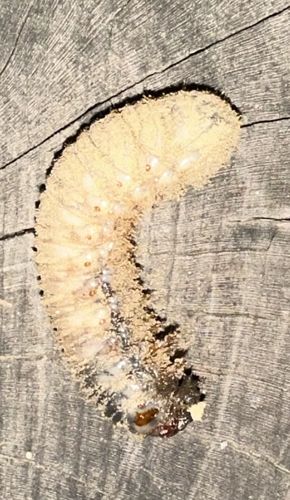Scarab Grub (White Grub)
Scientific Name: Various species in the family Scarabaeidae (e.g., Phyllophaga spp., Popillia japonica, Cyclocephala spp.)
Order & Family: Coleoptera, Scarabaeidae
Size: Typically 1-5 cm (0.4-2 inches) in length, but can vary by species.

Natural Habitat
Below ground, typically found in soil, under decaying logs, or in compost. They prefer moist, organic-rich environments.
Diet & Feeding
Primarily feed on decaying organic matter, roots of grasses, crops, and other plants. Some species are also known to consume manure.
Behavior Patterns
Scarab grubs are the larval stage of scarab beetles. They are C-shaped, soft-bodied, and typically white or off-white with a brown head capsule and three pairs of legs. They move slowly through the soil, feeding continuously to grow. Their life cycle usually lasts one to three years, with most of this time spent as a grub underground. They pupate in the soil before emerging as adult beetles.
Risks & Benefits
Risks: Can be significant pests in agriculture and horticulture, feeding on the roots of turfgrass, vegetables, and ornamental plants, causing wilting, yellowing, and eventual death of plants. Benefits: Some species play a role in decomposition, breaking down organic matter and recycling nutrients in the soil. They also serve as a food source for various birds, mammals, and other insects.
Identified on: 10/18/2025